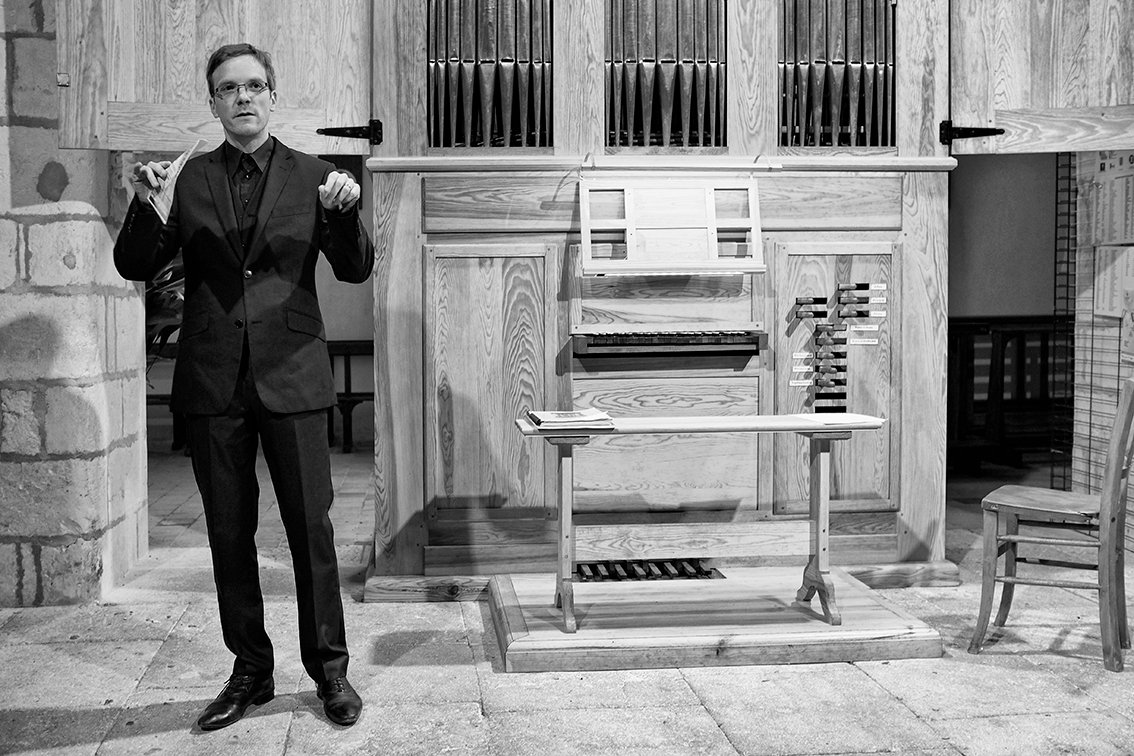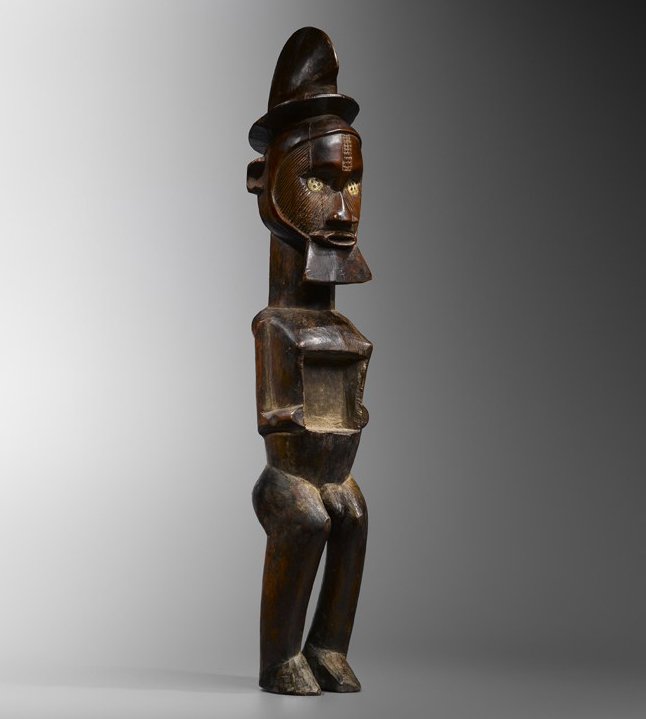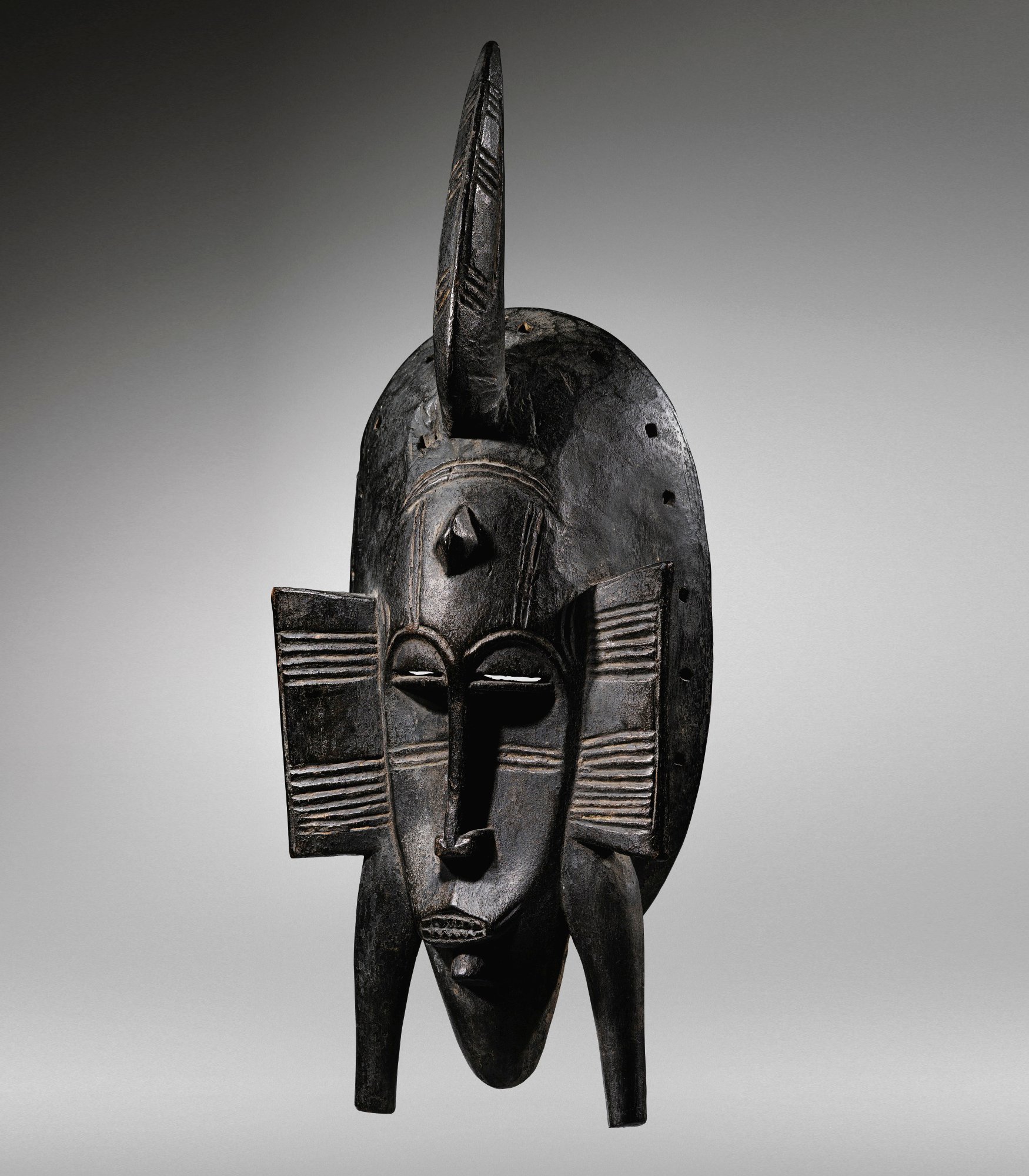THE COLLECTIVE: Olivier Salandini, instinctive yet rational
Paris, 6 octobre 2017

The world of Ancient Arts from Africa, Oceania and America is populated by collectors and enthusiasts. Laurent Granier explores their personal journeys, their strategies, their uncertainties, and the driving forces behind their passion. Together, they discuss the objects, their stories, and the market that keeps them in motion.
Olivier Salandini, instinctive yet rational
Like any good musician who fine-tunes his repertoire, organist and harpsichordist Olivier Salandini lives surrounded by exquisitely selected works of art. And they transform him. The man who believes that “going to a museum is like going to a concert” met us to discuss his intimate relationship with African art objects, his favourite pieces, but also his approach to time and the Importance of continually developing his taste. Rendez-vous at the café Le Balto on Rue Mazarine, and at the Galerie Yann Ferrandin on Rue de Seine in Paris, on 1 April 2017.
Like living with someone
“How did I get started? Through antique stores. I’d buy here and there without much knowledge. I accumulated quite a bit but I stopped after a while when my music studies became my sole focus. Around 2000, I went to the Galerie L'Albertine in Nice. I left with two statues that looked to me like they were far better quality than anything I’d seen until then, and I picked up buying again. I decided to sell off everything else. Then I met Patrice Brémond, a collector, who was my first teacher. Next, Loed van Bussel had a great impact on me, and I’d go and see him from time to time in Amsterdam during my studies.” But perhaps the big turning point can be pinned down to 2007 when he made a purchase at Sotheby's: “A beautiful heddle pulley. The object’s quality and its history were meaningful. And I got it at a good price. What seemed inaccessible to me now appeared possible. I became a treasure hunter.” Another turning point, more recent, was when he made the acquaintance of Yann Ferrandin: “Not only does he have a taste and professionalism that I admire, but he also knows how to share his precious knowledge with small collectors like me.” Not just one starting point then, but several, although it could easily be said that, through contact with top-quality objects, Olivier’s passion for collecting is reborn every time.

Olivier Salandini considers himself an amateur, someone whose goal is to love what he does. He collects what he can, but only when it helps him to progress. “It’s important for me to progress, to seek, to find. I’d say that I’m selective and capable of change.” With an eye that he considers to be still developing, not yet “stabilised”, Olivier makes an effort to hear different points of view, to exchange opinions with others. What draws his attention to an object in particular is “expression, sensitivity, harmony”, and the quality that causes forms to be “animated, not frozen”. Olivier’s Teke or Bembe works have appeared frequently in publications. Some are kept in his home, others await new owners, temporarily housed by Parisian dealers. He points out some objects displayed by his favourite gallerist: “Bateke, Ogoni and heddle pulleys. And Senufo! That’s what I collect.”
Regarding what makes up a good collection, Olivier thinks that “everything depends on your ambition, but whatever your budget, the collection mustn’t contain fakes or copies. Already, that’s hard enough. Next, the collection should offer something, for example membership of the same ethnic group, or a transversal feature, whether it’s to do with the patina, geometric patterns, exacerbated expressionism… In any case, it has to embody a spirit, to be homogeneous in some way. The worst collections are those where investors accumulate boxes of objects that are unrelated to one another.” Olivier returns to his own collection: “I look for objects that are important for a given ethnic group. Important not necessarily meaning expensive, but well positioned in relation to the corpus of the type and ethnic group in question.”
The formula is more complex than it might seem. “Instinctive yet rational,” as he likes to define himself, Olivier possesses that perfect tension specific to the collector: an ability to preserve the eye’s sensitivity, while bearing in mind the classification criteria that regulate the market – quality, age, provenance… and market value!
A radical lifestyle choice
For this conservatory teacher and organist, who plays the Great Organ in Bourges, “art is existential, close to religion. It allows us to approach something that surpasses us. As a musician and African-art collector, my lifestyle choice is radically geared towards art.” And it’s precisely as a musician that Olivier “can feel this energy of creation through sensitivity. Strength, life: we can better discern the anima than the faber. Perhaps designers can feel it with their hands. In music, I hear the work, the concept, because [he] gets his hands dirty!”
Olivier needs to have his objects around him: “To work on one’s taste, it’s necessary to live with objects on a daily basis. The same goes for music: we live with the pieces that we work on and that we play at concerts for months before moving onto a new programme.”

The musician has a good deal to say on rigour: “I often go back to Negerplastik by Carl Einstein (reference work on the theorisation of African sculpture, published in 1915). Here, proportions are very important. There’s a golden ration in sculpture, but also in music, for the structure of musical pieces, what is also known as the climax. I was at an opening at Philippe Ratton’s for the Série noire exhibition, playing the harpsichord, in 2013. In that instance, things worked out very instinctively – and really well!”
We don’t always go on holidays
Olivier’s search for beauty seems to be shared by those around him. “I’m lucky to have a wife who also enjoys this, and she gives me a lot of freedom. She’s a musician too – that helps. The only problem is the issue of managing finances. We don’t always go on holidays.” So is collectionitis a serious ailment? “You have to make sure that it doesn’t become one.”
Then what’s the best way to buy? “Often, the objects that you buy with your brain aren’t the best buys. The best ones are bought with your heart. When the object’s sensibility and beauty attract you, then it’s up to the brain to do some work: to call on the memory, and look up sources – books first, Internet next, Yale, Artkhade…” He admits that aesthetic shocks are rare, and has never tired of objects bought this way.
Even if Olivier owns some 600 sales catalogues and nearly a thousand books, he “only keeps what [he] believe[s] to be necessary. Sotheby's in particular, as these are the best catalogues. [He has] all of them since 1975.” His favourite provenances are “Chauvet, Rasmussen, Goldet, Schoeller for Nigeria, Fourquet. Their taste is exceptional.”
Today, many objects circulate via auctions. How does one make selections and choices in this context? “I follow all the sales. There are few objects around, and as soon as something comes out, everyone’s onto it. I try to follow what’s happening as far as possible, but there are still sales that I miss. The problem with auctions is that, in the end, the prices are sometimes higher than gallery ones. And this is very dangerous. You have to have good expertise. The price also needs to allow for risk. I wouldn’t take any risks, without expertise, on an object at more than 3,000 euros, except for the ethnic groups I’m very familiar with. I also work a great deal through exchanges, I sell in order to buy. As time goes by, I avoid making online purchases.”
Olivier’s take on the market is the following: “I feel that interest is declining for all objects that aren’t exceptional or of very high quality. Ethnography, of course, suffers from this. The fact is that there aren’t many new collectors who are serious and conscientious. And it’s rare for there to be under-fifties among them.”
“The current policy of the big sales and fairs is to reel in big contemporary-art clients. This is very dangerous because when we privilege this public, we denigrate those who are less rich, but who still keep the market running. In order for a market to be healthy and viable, there need to be lower strata that work just as well as the upper strata. This is no longer the case at all: a superb object at 300,000 euros will sell in a minute while dealers will sometimes keep a fine object valued at under 5,000 euros for three or four years before managing to sell it.” “But it needs to be said, again and again: it’s possible, in 2017, for a forty-year-old to collect African art. We can find very modest prices for ancient pieces that are entirely respectable, witnesses of a given culture, works of art in their own right.”
The statistics established by Artkhade reveal that between 2000 and 2008, public sales registered an average unsold rate of 25 % for objects whose low estimates were below 10,000 euros. Today, the figure is 38 %. Meanwhile, the average unsold rate for objects with low estimates upwards of 100,000 euros comes to 33 %, compared to 37 % between 2000 and 2008. However, for objects with low estimates between 10,000 and 100,000 euros, the unsold rate remains unchanged since 2000, steady at 45 %.